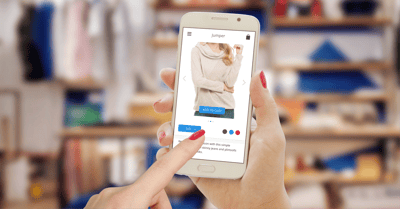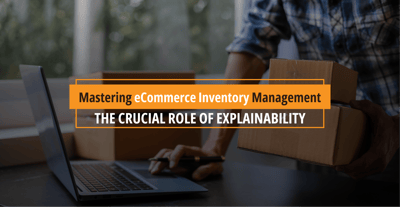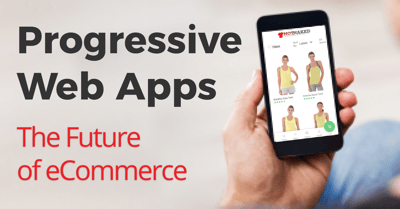Headquarters
175 S Main St Suite 1310,
Salt Lake City, UT 84111

The moment a customer clicks “Place Order,” their post purchase experience with the brand enters a new, critical phase, one that’s often overlooked.
For most retailers, this is also where communication starts to fall apart. Customers are left in the dark: Has my order been packed? Has it shipped? Is it delayed?
Without clear updates, uncertainty creeps in. That anxiety turns into “Where’s my order?” tickets, rising support costs, and a slow erosion of trust.
And yet, all of this is preventable.
In today’s market, 86% of customers say their post purchase experience determines whether they’ll shop with a brand again. So, treating this phase as an afterthought isn’t just risky, it’s a missed opportunity.
That’s where a modern Order Management System (OMS) comes in. When connected with tools like Klaviyo or Iterable, it becomes a communication powerhouse, keeping customers informed, support teams empowered, and loyalty intact.
In this blog, we’ll break down:
When customers aren’t hearing from you, it’s usually because the systems behind the scenes aren’t talking to each other.
Your eCommerce platform might send the initial order confirmation. Your 3PL might send shipping updates. But what happens in between when the order is picked, packed, delayed, or canceled often goes unmentioned.
These communication gaps don’t just frustrate customers. They create real business problems.
When customers don’t receive timely updates, they often reach out for information that your team should have pushed to them automatically.
For every untriggered “ready to ship” or “pickup ready” message, there’s a support ticket waiting to happen. These avoidable interactions increase handle times, distract agents from solving complex issues, and spike support costs, especially during peak season.
Even if fulfillment is on track, silence introduces doubt. Customers today are conditioned to expect transparency, not just at checkout, but throughout the post purchase experience.
Without it, trust starts to fray. Your brand shifts from reliable to uncertain, and customers become less likely to come back, even if their package arrives on time.
You've invested in acquisition, personalized shopping experiences, and smooth checkout flows. But one shaky post purchase experience, one confusing pickup delay or stockout can undo all of it.
Loyalty doesn’t end at conversion. It’s built in the days that follow.
A modern Order Management System does far more than just route orders and manage inventory. It becomes the central nervous system for your fulfillment operations, tracking every step an order takes and translating those steps into clear, timely messages for customers and internal teams alike.
But the real power of an OMS comes to life when it’s integrated with customer engagement tools like Klaviyo or Iterable. This unlocks a proactive communication layer that turns operational events into customer confidence.
Here’s how:
Most eCommerce platforms send order confirmations and shipping notifications. But what about the moments in between?
 These are critical moments where silence can be confusing, but they’re often ignored simply because the systems aren’t connected.
These are critical moments where silence can be confusing, but they’re often ignored simply because the systems aren’t connected.
When your OMS is linked with a CRM or messaging platform, each fulfillment event, like “order brokered,” “ready to ship,” or “delivered,” can trigger automated updates via email or SMS. That means customers stay informed without needing to ask.
Disconnected systems don’t just frustrate customers, they slow down your teams.
Without access to real-time order status, your support agents are left guessing, escalating, or checking with fulfillment manually. That’s time lost, tickets delayed, and satisfaction compromised.
By connecting your OMS to your CRM tools, every team member, from chat agents to store associates, can see exactly where an order stands. No toggling between systems. No second-guessing.
Things will go wrong. Orders will get delayed. Pickups will be missed. Items will go out of stock.
What matters most is how quickly and clearly you respond.
A connected OMS setup can automatically detect these exceptions and trigger proactive messages, like:
Instead of damage control, you’re building trust, because customers appreciate being kept in the loop.
Most retailers only message customers at the very beginning (order confirmation) and the very end (shipping/delivery).
But the middle part of the journey is where reassurance matters most and where most brands go silent.
Here’s how a connected OMS + CRM setup fills those gaps, step by step:

You can invest heavily in traffic, conversion, and design, but if the post purchase experience is filled with silence and confusion, that’s what your customers will remember.
Loyalty isn’t built at checkout. It’s built in the moments that follow:
With the right OMS integration, retailers can turn those quiet, uncertain moments into a branded, reassuring journey. And the best part? You don’t need to build it from scratch.
* * *
With prebuilt integrations to platforms like Klaviyo and Iterable, HotWax Commerce OMS helps retailers:
Instead of asking “Where’s my order?”, your customers get answers before they need to ask.






